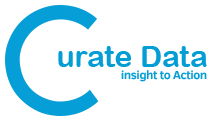This blog outlines what data architecture means, the importance of data architecture, and how any organization – big or small – can develop a strategy that grows with them.
What is Data Architecture?
Data architecture is the big picture view of how data is collected, stored, connected and used. To paraphrase Bernard Tschumi, ‘ every data architecture represents a city of your data – there are streets (data pipelines), buildings (storage systems), traffic rules (governance), and public services (analytical tools).
Data architecture is a foundational aspect for any modern business looking to help build teams that can work with data in a consistent, secure, and meaningful way.
Why is Data Architecture important?
Without the right structure in place, data becomes chaotic. Teams pull from different sources, reports don’t match, and decision making gets messy.
A well thought out data architecture framework keeps everything aligned. It ensures:
- Data flows smoothly across teams
- Privacy and security policies are followed
- Information is reliable and accessible
- Everyone speaks the same ‘data language’
Good data architecture isn’t just about systems–it’s about trust and clarity across your entire organization.
What makes up Modern Data Architecture?
Today’s data architecture is made of several key components:
Data Sources
Your apps, systems, sensors, customer interactions – essentially wherever data exists.
Data Ingestion
How data is brought into your data architecture – this may include real-time ingestion streams, or scheduled uploads (ETL/ELT).
Data Storage
Data can be held in several forms from classic data warehouses to flexible data lakes and lakehouses.
Data Processing
Turning unprocessed raw data into valuable insights, either instantly or in batches.
Governance & Security
Making sure data is accurate, private, and well-managed.
Metadata Management
Tools that help you understand where your data is coming from and how it is being used.
These components, together define how well your data can work for you.
Different Approaches to Data Architecture
There’s no one-size-fits-all model. The best data architecture depends on your business needs. Here are a few common approaches:
Data Warehouse
Great for structured data and reporting
Data Lake
Stores raw data in bulk which can be shaped later
Lakehouse
Combines the best of lakes and warehouses
Data Mesh
Team-based approach. Let’s individual team take ownership of their data.
Data Fabric
Connects data from various places into a unified way.
Lambda/Kappa
Ideal for handling real-time and historical data together.
Hybrid Models
Combine on-premise with cloud to offer flexibility.
The right approach helps your data strategy grow with your business.
Trusted Frameworks that Guide Data Architecture
When building a strong data architecture, most teams leverage existing models. Here are a few popular ones:
TOGAF
Widely used in enterprise settings to align IT and business
DAMA-DMBOK
A playbook for managing data responsibly
Zachman
Offers multiple perspectives for planning complex systems
FEAF
Used by governments and large institutions to bring structure to data systems
These frameworks provide direction without locking you into rigid rules.
Core Principles That Keep It Working
Here are the values at the heart of any good data architecture strategy:
- Keep It Simple: Overengineering causes confusion
- Plan for Growth: Your needs will evolve—your architecture should too
- Break Down Silos: Treat data as a company-wide resource
- Stay Secure & Compliant: Protect both your business and your users
- Optimize for Speed: Ensure your systems keep up with demand
- Encourage Collaboration: Data systems should work across departments
- Always Improve: Regularly revisit and refine your setup
Following these data architecture principles builds long-term resilience.
What You Gain from Getting It Right
An optimized data architecture brings benefits that ripple across the organization:
- Unified access to data from all departments
- Better-quality reports, faster
- Smarter decisions backed by real-time insights
- Cost savings through reduced duplication and errors
- Confidence in your compliance and data security
In short, it makes your data strategy work for the real world.
Real-World Examples in Action
Look at companies like:
- Netflix, which uses advanced pipelines to deliver personalized content at scale
- Uber, whose pricing and routing models rely on fast, reliable data streams
- Airbnb, which leverages data lakes and real-time analytics for a seamless guest experience
They all rely on carefully designed data architectures to keep things running smoothly.
How It Differs from Data Modeling
This is a common question: How is data architecture different from data modeling?
- Architecture is the big-picture structure—what connects where, and how
- Modeling dives into the details—what tables and fields look like, and how data is organized
One maps the city, the other designs the buildings.
Curate Data: Helping You Build Smarter
At Curate, we partner with companies to create modern, flexible data architecture frameworks that scale. We help with:
- Building secure data warehouses
- Migrating to the cloud, seamlessly
- Real-time analytics for faster decisions
- Ensuring governance and compliance from day one
Our focus is not just technology, but creating meaningful outcomes from your data.
Final Thoughts
In a fast-changing digital world, data will either hold you back—or carry you forward. With the right data architecture, you set the stage for agility, confidence, and growth.
Looking to modernize your data foundation? Let Curate help you get started.
FAQs
Q1. Is ETL part of data architecture?
Yes. ETL/ELT processes are crucial in moving and preparing data—making them core to modern data architecture.
Q2. What are the three essential models in data architecture?
Conceptual, logical, and physical models help shape how data is structured and used.
Q3. What is the difference between data architecture and data management?
Data architecture sets the structure; data management focuses on day-to-day operations like cleaning, securing, and monitoring data.
Q4. Can a data architecture framework improve data governance?
Definitely. A solid data architecture framework includes governance policies that define access, security, and data responsibilities.


 Let`s get started!
Let`s get started!
0 Comments